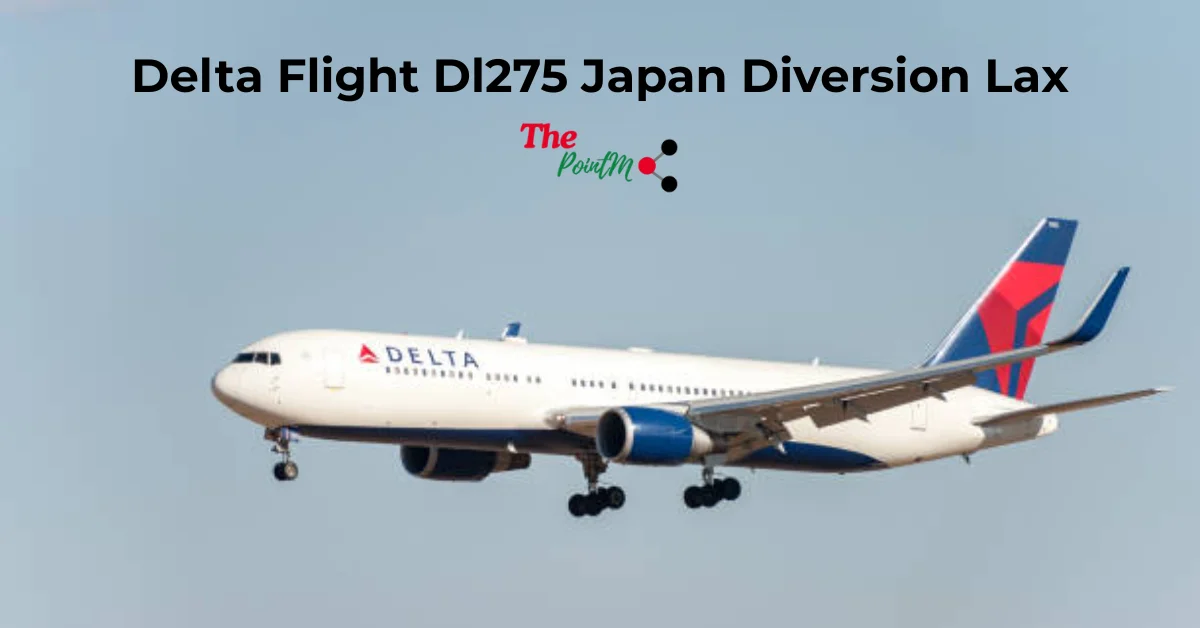Introduction to the Delta Flight DL275 Diversion
Traveling is often an adventure filled with excitement and anticipation. But sometimes, unexpected events can turn a routine flight into an unforgettable story. Delta Flight DL275, en route from Tokyo to Los Angeles, became the talk of the town when it was diverted to LAX under unusual circumstances. Passengers on board were left bewildered as they navigated through this unexpected twist in their journey. What really happened during that diversion? Buckle up as we dive deep into the gripping details surrounding Delta Flight DL275 and uncover the events that unfolded at LAX.
The Events Leading up to the Diversion
Delta Flight DL275 was en route from Tokyo, Japan to Los Angeles when unexpected circumstances unfolded. As the aircraft approached LAX, air traffic control received concerning information regarding an onboard issue.
Passengers were initially unaware of the looming situation. The flight had been operating smoothly until notifications began flashing on the cockpit instruments. Crew members swiftly assessed the problem while maintaining communication with ground operations.
As they neared Los Angeles, a decision was made to divert. This choice stemmed from safety protocols designed for such emergencies. It wasn’t long before passengers felt a shift in atmosphere; anxiety rippled through the cabin as announcements informed them of the diversion.
The plane changed its course toward an alternate airport nearby. With every passing minute, uncertainty grew among those aboard about what lay ahead and how this would affect their travel plans.
Passengers’ Experience and Reactions
As Delta Flight DL275 approached its destination, the unexpected diversion took many passengers by surprise. Confusion spread in the cabin as announcements were made about landing at LAX instead of their intended route to Japan.
Some passengers expressed frustration. They had been eagerly anticipating their arrival, only to face an unplanned stopover. Others shared a sense of camaraderie, bonding over shared uncertainty and concern.
Social media quickly lit up with reactions. Travelers posted updates, sharing their experiences and expressing both relief for safety measures and disappointment over disrupted plans. The airline’s communication—or lack thereof—became a hot topic among those waiting for further instructions.
Despite the chaos, some found humor in the situation. They joked about becoming accidental tourists in Los Angeles and even started planning spontaneous outings while they waited for news on rescheduled flights. The mix of emotions showcased resilience amidst unpredictability.
Official Statements from Delta Airlines
Delta Airlines released a statement addressing the diversion of Flight DL275. The airline emphasized its commitment to passenger safety and well-being during unexpected situations.
In their communication, Delta stated that the decision to divert was made in collaboration with air traffic control and was taken as a precautionary measure. They acknowledged the inconvenience caused to passengers but highlighted their dedication to ensuring everyone’s security on board.
Additionally, Delta reassured travelers that they are investigating the circumstances surrounding this incident. Their team is working diligently to gather information and provide clarity about what transpired during the flight.
Passengers were encouraged to reach out for assistance regarding travel plans affected by the diversion. Delta’s customer service teams were mobilized at LAX to support those impacted directly by this event.
Possible Reasons for the Diversion
Multiple elements might have played a role in the diversion of Delta Flight DL275. Technical malfunctions are often a primary concern for airlines. A sudden alert or malfunction can prompt pilots to prioritize safety and reroute.
Weather conditions may also play a significant role. Severe storms, turbulence, or low visibility near LAX might have influenced the decision-making process during the flight.
Health emergencies among passengers present another possibility. If someone aboard was in distress, quick action would be necessary to ensure their well-being.
Moreover, air traffic control directives can lead to diversions as they manage congested airspace efficiently. Pilots must remain flexible and responsive under such circumstances.
Each of these factors underscores the complexities involved in aviation safety decisions that ultimately impact passenger experiences and airline operations alike.
Impact on Passengers and the Airline Industry
The diversion of Delta Flight DL275 had immediate repercussions for passengers. Many faced uncertainty as they were rerouted to LAX. Frustration simmered among families and travelers with tight schedules.
Airports like LAX quickly became crowded hubs filled with displaced tourists and business travelers alike. Some passengers missed connecting flights, leading to a domino effect that disrupted travel plans across the country.
From an industry perspective, this incident put a spotlight on emergency protocols. Airlines are now evaluating their response strategies in similar situations, striving for better communication and support systems.
Customer service teams worked overtime at affected airports, highlighting the importance of adaptability in crisis management. The situation served as a wake-up call about passenger care during unforeseen diversions.
For many airlines, Delta’s experience underscored the need for robust contingency planning to enhance operational resilience while minimizing traveler distress during unexpected events.
Lessons Learned and Changes Made by Delta Airlines
Delta Airlines has taken the diversion of flight DL275 as a significant learning opportunity. Communication is key, and the airline recognized that clearer information could have alleviated passenger anxiety during the unexpected situation.
In response to feedback, Delta has revamped its in-flight communication protocols. Flight attendants now have enhanced training on how to convey important updates effectively and compassionately.
The operational teams are also reviewing safety measures, ensuring that diversions can be handled with increased efficiency in the future. This includes better coordination with air traffic control and ground services for quicker responses.
Customer service strategies are evolving too. Delta aims to enhance support systems for passengers affected by disruptions, including streamlined rebooking processes and more immediate assistance upon landing.
These changes reflect an ongoing commitment to improving the travel experience while prioritizing safety and clear communication during unforeseen events like this one.
Conclusion
The Delta Flight DL275 diversion at LAX has become a significant event, capturing the attention of passengers and aviation enthusiasts alike. This incident sheds light on the complexities of air travel in today’s world.
As we reflect on this occurrence, it’s clear that communication is vital during such unexpected situations. Passengers voiced their concerns and fears, highlighting the need for airlines to prioritize transparency and support. With official statements from Delta Airlines attempting to clarify the situation, it remains crucial for all stakeholders in the industry to learn from these experiences.
Moreover, understanding potential reasons behind diversions can help mitigate similar issues in future flights. The airline’s response demonstrates an ongoing commitment to improving safety protocols and passenger experience.
Events like these remind us that while flying remains one of the safest modes of transportation, it’s always subject to unforeseen circumstances requiring adaptability from both airlines and travelers alike.

